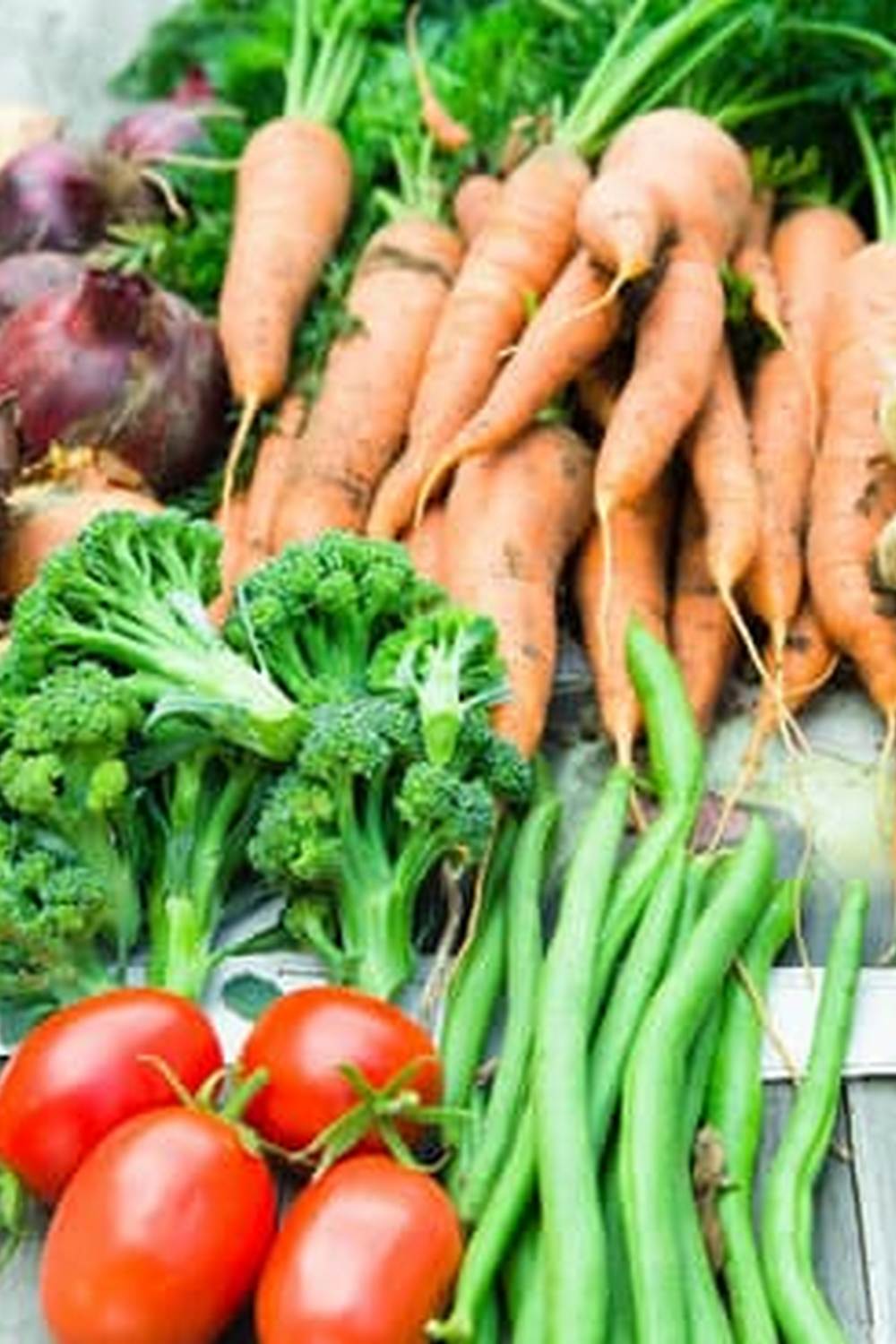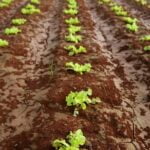Vegetable gardening in Zone 5A presents unique challenges and opportunities for gardeners. With its specific climate and growing conditions, cultivating a successful vegetable garden requires careful planning and knowledge. In this guide, we will delve into the world of vegetable gardening in Zone 5A, exploring the essential tips and tricks to help you thrive in this region.
Zone 5A is characterized by its cold winters and relatively short growing season, making it crucial for gardeners to select the right vegetables that can withstand these conditions. Understanding the climate and soil quality of Zone 5A is paramount in determining which plants will flourish in your garden. With proper preparation and maintenance, however, it is possible to grow a bountiful harvest even in this challenging zone.
In this article, we will discuss the best vegetables suited for Zone 5A, how to prepare the soil for planting, essential tools and equipment needed for successful gardening, as well as planting schedules and maintenance tips. Additionally, we will address common pests and diseases that may affect your garden in Zone 5A and provide guidance on how to deal with them effectively. Stay tuned as we unravel the secrets to thriving vegetable gardening in Zone 5A.
Understanding the Climate and Growing Conditions in Zone 5A
Zone 5A, known for its cold winters and relatively short growing season, presents unique challenges for vegetable gardening. Understanding the climate and growing conditions in this zone is essential for successful cultivation of a variety of crops. With an average annual minimum temperature of – 20 to – 15 degrees Fahrenheit (-28.9 to – 26.1 degrees Celsius), gardeners in Zone 5A must carefully choose vegetables that can withstand these harsh conditions.
One key aspect of the climate in Zone 5A is the frost dates, which dictate when it is safe to start planting tender crops outdoors. The last spring frost date typically falls around mid-May, while the first fall frost date is usually by late September or early October. This means that gardeners need to plan their planting schedules accordingly to make the most of the growing season.
In addition to frost dates, understanding the soil conditions in Zone 5A is crucial for successful vegetable gardening. The soil in this zone can range from sandy loam to heavy clay, with varying levels of fertility and drainage. Conducting a soil test can help determine any deficiencies or imbalances that need to be corrected before planting. Adding organic matter such as compost and ensuring proper drainage are important steps in preparing the soil for vegetable gardening in Zone 5A.
| Climate | Growing Conditions |
|---|---|
| Cold winters | Short growing season |
| Average annual min temperature: – 20°F to – 15°F (-28.9°C to – 26.1°C) | Frost dates: mid-May (last spring) and late Sep/early Oct (first fall) |
Selecting Vegetables Best Suited for Zone 5A
Zone 5A presents a unique set of challenges and opportunities when it comes to vegetable gardening. With its cold winters and short growing season, it is crucial to select vegetables that are well-suited for this climate.
Some of the best vegetables to consider planting in Zone 5A include root vegetables like carrots, beets, and radishes, as well as cold-hardy greens such as kale, lettuce, and spinach. These vegetables can withstand the cooler temperatures and shorter growing period typical of Zone 5A.
When selecting vegetables for your garden in Zone 5A, it is important to consider the specific microclimates within your space. Areas that receive more sun or have better drainage may be suitable for heat-loving plants like tomatoes, peppers, and cucumbers. Additionally, you may want to explore extending your growing season with the help of tools like cold frames or row covers to protect your crops from early frosts in the fall.
One key aspect of selecting vegetables for Zone 5A is choosing varieties that have a shorter time to maturity. This ensures that you can harvest your crops before the first frost arrives in the fall.
Be sure to check seed packets or plant labels for information on days to maturity and choose varieties that fit within your growing window. By carefully selecting vegetables that thrive in Zone 5A’s unique climate and growing conditions, you can set yourself up for a successful vegetable garden filled with bountiful harvests.
| Vegetable | Growing Season |
|---|---|
| Carrots | 70-80 days |
| Kale | 55-60 days |
| Radishes | 25-30 days |
Preparing the Soil in Zone 5A for Vegetable Gardening
When preparing the soil for vegetable gardening in Zone 5A, it is crucial to ensure that the soil is nutrient-rich and well-draining to support healthy plant growth. One of the first steps is to test the soil pH levels to determine its acidity or alkalinity. Most vegetables thrive in slightly acidic soil, with a pH level around 6.0 to 7.0. If necessary, amend the soil with lime to raise pH or sulfur to lower it accordingly.
Adding Organic Matter
Incorporating organic matter into the soil is essential for improving its structure, fertility, and moisture retention capacity. Begin by tilling the soil to break up any compacted layers and then mix in compost, well-rotted manure, or other organic materials like peat moss or aged leaf mold. This will provide a steady supply of nutrients for your vegetable plants throughout the growing season.
Addressing Drainage Issues
Proper drainage is vital for preventing waterlogged soil, which can lead to root rot and other health issues in plants. To improve drainage in heavy clay soils commonly found in Zone 5A, consider incorporating coarse sand or perlite into the soil mix. Additionally, raised beds or mounded rows can help create better drainage conditions for your vegetable garden. Regularly monitor irrigation practices to ensure that excess water does not accumulate around plant roots.
By taking the time to properly prepare your soil before planting your vegetable garden in Zone 5A, you are setting yourself up for a successful and bountiful harvest. Remember that healthy soil is the foundation for healthy plants, so investing effort into this stage of gardening will pay off throughout the growing season.
Essential Tools and Equipment for Vegetable Gardening in Zone 5A
Vegetable gardening in Zone 5A requires the use of specific tools and equipment to ensure a successful harvest. Here are some essential items every gardener should have on hand:
- Garden shovel: A sturdy garden shovel is essential for preparing the soil, digging holes for planting, and transplanting seedlings in your vegetable garden.
- Garden hoe: A garden hoe is useful for weeding and cultivating the soil in between rows of vegetables.
- Hand trowel: A hand trowel is perfect for planting seedlings, digging small holes, and transplanting delicate plants without damaging their roots.
- Garden rake: A garden rake can help level the soil, remove debris, and create smooth seedbeds for sowing seeds.
In addition to basic hand tools, there are certain equipment options that can make vegetable gardening in Zone 5A more efficient and enjoyable:
- Garden gloves: Protect your hands from blisters, cuts, and thorns with a sturdy pair of gardening gloves.
- Garden hose or watering can: Ensure your vegetable plants receive an adequate amount of water by investing in a reliable garden hose or watering can for watering purposes.
- Pruning shears: Keep your plants healthy by pruning dead or diseased branches with a sharp pair of pruning shears.
Having the right tools and equipment will not only make your vegetable gardening experience in Zone 5A more manageable but also help you achieve optimal results. By investing in quality gear and taking care of it properly, you can enjoy a bountiful harvest of fresh, homegrown vegetables throughout the growing season.
Planting Schedule and Maintenance Tips for Zone 5A
When it comes to vegetable gardening in Zone 5A, proper planning and maintenance are key to a successful harvest. Knowing the ideal planting schedule for your region can help you maximize your growing season and ensure that your plants thrive. Here are some tips and guidelines to keep in mind when it comes to planting and maintaining your vegetable garden in Zone 5A:
- Start with a detailed planting schedule: Make a list of vegetables you want to grow and determine the best time to plant each one based on your last frost date. This will help you avoid planting too early or too late, ensuring that your plants have enough time to mature before the first frost.
- Monitor soil temperature: Some vegetables require warm soil to germinate and grow, so investing in a soil thermometer can help you determine when it’s the right time to plant seeds or transplant seedlings.
- Stay on top of watering and fertilizing: In Zone 5A, summers can be hot and dry, so make sure to water your garden regularly, especially during dry spells. Additionally, using organic fertilizers or compost can help replenish nutrients in the soil and promote healthy growth.
Proper maintenance is also crucial for a productive vegetable garden in Zone 5A:
- Regular weeding: Keep weeds at bay by regularly inspecting your garden beds and removing any unwanted plants. Weeds compete with your vegetables for nutrients and water, so maintaining a weed-free garden is essential.
- Pruning and staking: Some vegetables like tomatoes, cucumbers, and peppers may benefit from pruning or staking to support their growth. Keeping plants upright can prevent diseases and improve air circulation around them.
- Pest control: Monitor your garden for common pests like aphids, caterpillars, or beetles that may damage your crops. Consider using natural methods like insecticidal soap or neem oil to control pest populations without harming beneficial insects.
By following these planting schedule and maintenance tips for vegetable gardening in Zone 5A, you can enjoy a bountiful harvest of fresh produce throughout the growing season while keeping your plants healthy and thriving. Remember that every gardener’s experience is unique, so don’t hesitate to adapt these tips to suit your specific needs and preferences.
Dealing With Common Pests and Diseases in Zone 5A
Identifying Common Pests
One of the challenges that vegetable gardeners in Zone 5A face is dealing with common pests that can wreak havoc on crops. Some of the most common pests include aphids, cabbage worms, cucumber beetles, and cutworms. These pests can cause damage to plants by feeding on leaves, stems, and fruits, ultimately affecting the overall health of the garden.
Preventing Pest Infestations
To prevent pest infestations in your vegetable garden in Zone 5A, it is important to practice good garden hygiene. This includes regularly removing weeds, fallen leaves, and any plant debris that can provide hiding spots for pests. Consider using physical barriers like row covers or netting to protect vulnerable plants from insect damage. Additionally, rotating crops each season can help disrupt pest life cycles and reduce their populations.
Managing Diseases
In addition to pests, vegetable gardeners in Zone 5A also need to be vigilant about diseases that can affect their crops. Common plant diseases such as powdery mildew, blight, and root rot can impact the growth and yield of vegetables.
To manage diseases effectively, practice crop rotation, choose disease-resistant varieties when possible, and avoid overhead watering which can promote fungal growth. It’s also crucial to monitor your plants regularly for any signs of disease so you can take action promptly to prevent further spread within your garden.
By staying proactive and implementing preventive measures against both pests and diseases in your vegetable garden in Zone 5A, you can help ensure a successful harvest year after year. Don’t hesitate to seek advice from local gardening experts or extension services if you encounter persistent issues that require additional guidance. With patience and dedication, you can overcome these challenges and enjoy a thriving vegetable garden in Zone 5A.
Harvesting and Preserving Your Vegetable Garden in Zone 5A
After putting in the time and effort to plant and nurture your vegetable garden in Zone 5A, the reward comes with harvesting the fruits of your labor. One of the joys of vegetable gardening is being able to enjoy fresh produce straight from your own backyard.
When it comes to harvesting, timing is key. Each vegetable has its own optimal harvest time, so it’s essential to familiarize yourself with when to pick each type to ensure the best flavor and quality.
In Zone 5A, where the growing season is somewhat limited due to the cooler climate, it’s crucial to make the most of your harvest. To extend the enjoyment of your homegrown vegetables beyond their peak season, consider various preservation methods. Canning, freezing, pickling, and drying are popular techniques for preserving vegetables. By properly storing your harvested produce, you can savor the flavors of summer well into the colder months.
When it comes to preserving your vegetable garden bounty in Zone 5A, planning ahead is key. Consider creating a preservation schedule based on when different vegetables will be ready for harvest. This way, you can efficiently process and store each crop at its peak freshness. Whether you’re stocking up on tomatoes for homemade sauces or freezing green beans for winter stews, preserving your harvest allows you to enjoy the taste of your garden all year round.
Success Stories and Tips From Experienced Gardeners in Zone 5A
When it comes to vegetable gardening in Zone 5A, learning from experienced gardeners can provide valuable insights and tips for success. These seasoned growers have navigated the unique challenges of this climate zone and have developed methods that work effectively. By incorporating their wisdom into your own gardening practices, you can increase your chances of a bountiful harvest.
One common piece of advice from experienced gardeners in Zone 5A is to start seeds indoors before the growing season begins. This allows for a longer growing period and helps plants establish strong root systems before being transplanted outdoors. Additionally, utilizing season extenders such as row covers or cold frames can protect tender plants from unexpected late frosts in this cooler climate.
Another tip shared by seasoned gardeners in Zone 5A is to practice crop rotation to prevent pests and diseases. By rotating where you plant certain vegetables each year, you can reduce the build-up of soil-borne pathogens and decrease the likelihood of pest infestations. This simple yet effective technique can help maintain the health of your vegetable garden over time.
Furthermore, experienced gardeners in Zone 5A emphasize the importance of regular soil testing and amending. By understanding the specific nutrient needs of your soil, you can ensure that your plants receive sufficient nourishment for optimal growth. Whether it’s adding compost for improved fertility or adjusting pH levels for better nutrient uptake, taking care of your soil is essential for successful vegetable gardening in Zone 5A.
Conclusion
As we conclude our guide to vegetable gardening in Zone 5A, it is evident that with the right knowledge, preparation, and dedication, anyone can successfully grow a bountiful garden in this challenging climate. By understanding the unique characteristics of Zone 5A, selecting suitable vegetables, preparing the soil properly, and following a planting schedule tailored to this region, gardeners can overcome the challenges posed by short growing seasons and unpredictable weather patterns.
While there may be certain pests and diseases that lurk in Zone 5A, being proactive with preventative measures and prompt treatment can help minimize damage to your crops. Remember to keep your tools and equipment well-maintained, stay on top of watering and weeding tasks, and monitor your plants regularly for any signs of trouble. By implementing these strategies, you can increase your chances of a successful harvest.
To all aspiring vegetable gardeners in Zone 5A, don’t be discouraged by the potential challenges that come with this region. Embrace the opportunity to learn from experienced gardeners who have thrived in similar conditions. Share tips and success stories within your gardening community to inspire each other along the way.
With patience, perseverance, and a love for gardening, you can turn your backyard into a thriving oasis of fresh produce that will not only nourish your body but also feed your soul. Happy gardening.
Frequently Asked Questions
What Vegetables Grow Best in Zone 5a?
In Zone 5a, vegetables that thrive include cold-hardy options like broccoli, carrots, kale, lettuce, and peas. These plants can withstand cooler temperatures and are suitable for the shorter growing season typical of this zone.
When Should I Start Seeds in Zone 5a?
Starting seeds in Zone 5a depends on the specific vegetable you plan to grow. Generally, seeds should be started indoors 4-6 weeks before the last frost date in spring. This allows young plants to be transplanted outdoors once the weather warms up.
When Should Zone 5 Be Planted?
Planting in Zone 5 is typically done after the last frost date in spring, which is usually around mid to late May. It’s important to check the local weather patterns and plant recommendations for your specific area within Zone 5 to determine the best timing for planting different vegetables accordingly.

If you’re looking to get into vegetable gardening, or are just looking for some tips on how to make your current garden better, then you’ve come to the right place! My name is Ethel and I have been gardening for years. In this blog, I’m going to share with you some of my best tips on how to create a successful vegetable garden.





